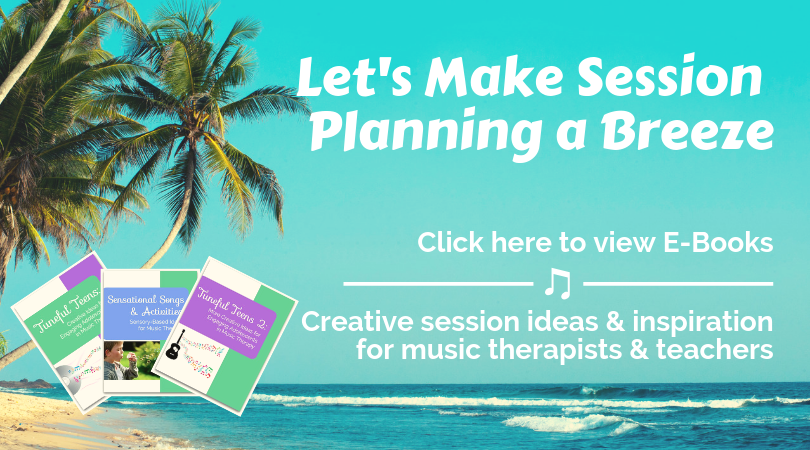
I have a confession to make…
Ready for it?
I used to be kind of a snob when it came to using recorded music in my sessions.
As a board certified music therapist, I am a firm believer that we have a unique skill set that sets us apart from other music professionals. We play a variety of social instruments that we can use to accompany ourselves while singing live. (I’ve used everything from a maraca to a ukulele!) And, we can adjust the tempo and other musical elements in the song to meet the needs of our clients (more on that here).
For a long, long time (about 13 years or so!) I was a huge proponent of using only live music when facilitating music therapy sessions for children and teens.
The past few years though, as I’ve worked at Children’s Resources Educational Center with students grades PreK-5, I’ve ‘changed my tune’ on this a bit.
Recorded music does have a place in our music therapy sessions, as long as it’s being used with therapeutic intent.
Here’s the perfect example:
In January, I was working on a Nutcracker-themed session plan for my older elementary students. My goal was to use listening guides to work on attention and auditory perception skills. The students would be asked to use adjectives to describe the music they were listening to, to pick out specific instruments in the orchestra, etc. There is no way I could have recreated the music of the Nutcracker myself and targeted those goals as effectively – the best results came from using a recording.
(I also used spooky listening guides for Halloween last year with my students and it was very effective!)
Here’s another example:
Earlier this month, I led a Cinco de Mayo themed session with my students. I brought in a recording of the “Mexican Hat Dance” because I wanted my students to shake their maracas in different ways, based on the music they were hearing. For the short, staccato notes at the beginning, I asked them to shake up and down; for the legato notes that followed, I asked them to sway side to side and shake their maracas side to side. In this case, again, the recorded music was so much more effective than it would have been if I had tried to recreate this on a social instrument.
I’m happy to say that after 13 years working as a music therapist I’m still learning, still evaluating what works and what doesn’t, and still changing my approach based on these observations.
I’d love to hear your input below.
Do you use solely live music, solely recorded music, or a mix of both? Let us know why in the comments below!



Leave A Comment